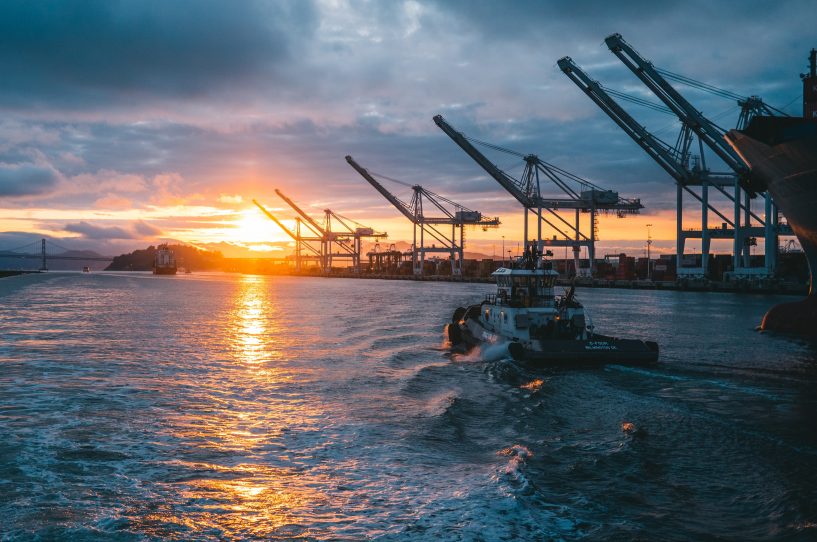May 27, 2019 Reading Time: 4 minutes
 Reading Time: 4 min read
Reading Time: 4 min readImage credits: RonanFuruta/unsplash
Plamen Tonchev*
While Greece and Sri Lanka are far apart, both countries sit on the ‘Maritime Silk Road’ of China’s signature Belt and Road Initiative (BRI). Both countries have seen growing Chinese presence, particularly with regard to their sea port facilities. This raises several intriguing questions: What comparisons can we draw between the two countries? And are there any lessons to be learnt from this comparison?
In the Greek case, the country’s biggest sea port of Piraeus is in the hands of the China Ocean Shipping Company (COSCO).1 The Colombo Port City is the single biggest foreign direct investment in Sri Lanka to date, carried out by the China Harbour Engineering Corporation (CHEC). In Hambantota, the Sri Lankan government has agreed to transfer- temporarily at least- a controlling equity stake to China in what is a very complicated legal arrangement.2
Both countries have had to relinquish control of strategically important assets because of their quest for foreign investment, and a high degree of vulnerability. There are three key takeaways from such a comparative analysis. In particular:
Sri Lanka has seen a debate on whether there is an insidious Chinese debt-trap strategy or the country’s indebtedness can be attributed to a global trend in the wake of the 2008 crisis. Colombo’s predicament should not be blamed exclusively on China’s loans for at least one more reason. It is true that consecutive governments have focused on infrastructure projects as growth drivers through foreign debt, thus contributing significantly to the country’s vulnerability. Infrastructure development, much as it is needed, may come at a cost to national sovereignty and independence.4
Clearly, Beijing’s goals are not confined to the national boundaries of host countries – in fact, they are regional, if not global. Both Greece and Sri Lanka have strategically important locations on the world map and are viewed by Beijing as gateways to much larger markets. Not only does Sri Lanka sit on the main sea route between East Asia, Africa and Europe, but it could also boost China’s economic penetration into the vast market of South Asia.5
In the case of Greece, the rationale behind the decision of COSCO to invest in Piraeus clearly relates to the attainment of two important goals. First, the construction of a cross-border transport corridor from the Mediterranean to Central Europe. Secondly, the presence of COSCO and other Chinese companies in Greece facilitates access to the eastern and southern shores of the Mediterranean.6
Beijing’s persistent ‘win-win’ rhetoric may have to be questioned on a number of occasions, as has become evident in other parts of South and Southeast Asia. Thus, China-financed projects in Malaysia worth up to USD 20 billion are being reviewed.7 There are many indications that Pakistan, host to the China-Pakistan Economic Corridor (CPEC), is falling into a ‘debt-trap.’8 In Myanmar, fears of insolvency have brought the construction cost of the China-financed deep water port of Kyaukpyu from the initial USD 7.3 billion price tag down to USD 1.3 billion.9 In Greece’s neighbourhood, too, Montenegro’s public debt has soared to 80% due to a Chinese loan for a controversial highway construction project.10
Of course, analogies between Greece and Sri Lanka cannot be overstated, as there are obvious and substantive differences between them. Despite the above similarities, the two countries belong to very different regions and face very different challenges. For instance, Greece is a member of well-structured economic and military blocs, such as the European Union (EU), the Eurozone and the North Atlantic Treaty Organization (NATO), which are powerful providers of security. Sri Lanka, in turn, belongs to much looser organisations such as the South Asian Association for Regional Cooperation (SAARC) and the Commonwealth. Both countries are in need of allies in dealing with the ever-growing presence of China in a meaningful way, by making the most of opportunities and minimising related risks.
1Ekathimerini. (2019). Athens torpedoes Cosco plans in Piraeus, Ilias Bellos | Kathimerini. [online] Available at: http://www.ekathimerini.com/239207/article/ekathimerini/business/athens-torpedoes-cosco-plans-in-piraeus?utm_source=Silk+Road+Headlines&utm_campaign=fb9da10aa8- [Accessed 21 May 2019].
2The Sunday Times. (2017). Two CBSL accounts for money received from lease or sale of public assets.[online]. Available at http://www.sundaytimes.lk/170813/news/two-cbsl-accounts-for-money-received-from-lease-or-sale-of-public-assets-254497.html.
3Casaburi, I. (2017). Chinese investment trends in Europe: China casts its eye on Southern Europe. China Policy Institute. [online] Available at: https://cpianalysis.org/2017/05/24/chinese-investment-trends-in-europe-china-casts-its-eye-on-southern-europe/
4Shepard, W. (2016). Sri Lanka’s Debt Crisis Is So Bad The Government Doesn’t Even Know How Much Money It Owes. Forbes. [online] Available at: https://www.forbes.com/sites/wadeshepard/2016/09/30/sri-lankas-debt-crisis-is-so-bad-the-government-doesnt-even-know-how-much-money-it-owes/#122ae6504608
5Horta, L. (2013). China’s Strategic Foothold in the Indian Ocean, Centre for Strategic Studies. ETH Zurich. [online] Available at: https://isnblog.ethz.ch/international-relations/chinas-strategic-foothold-in-the-indian-ocean
6Ekman, A. (2018). China in the Mediterranean: An Emerging Presence. Institute Francais des Relations Internationales. Available at: https://www.ifri.org/en/publications/notes-de-lifri/china-mediterranean-emerging-presence.
7Yin,D. (2019). Malaysia Shelves $20 Billion China-Backed Rail Project. Available at:
https://www.caixinglobal.com/2019-01-29/malaysia-shelves-20-billion-china-backed-rail-project-101375414.html
8Hussain, T. (2019). Pakistan risks Chinese anger by courting Saudi Arabia. South China Morning Post. [online] Available at: https://www.scmp.com/week-asia/opinion/article/2167157/cpec-pakistan-risks-chinese-anger-courting-saudi-arabia [Accessed 4 May 2019].
9Nitta, Y. (2019). Myanmar Cuts Cost of China-funded port project by 80%. Nikkei Asian Review. [online] Available at: https://asia.nikkei.com/Spotlight/Belt-and-Road/Myanmar-cuts-cost-of-China-funded-port-project-by-80 [Accessed 4 May 2019].
10Barkin, N. (2019). Chinese ‘highway to nowhere’ haunts Montenegro. Reuters. [online] Available at: https://www.reuters.com/article/us-china-silkroad-europe-montenegro-insi/chinese-highway-to-nowhere-haunts-montenegro-idUSKBN1K60QX [Accessed 4 May 2019].
*Plamen Tonchev is the Head of Asia Unit, Institute of International Economic Relations in Athens, Greece. The opinions expressed in this article are the author’s own and not the institutional views of LKI, nor do they necessarily reflect the position of any other institution or individual with which the author is affiliated.